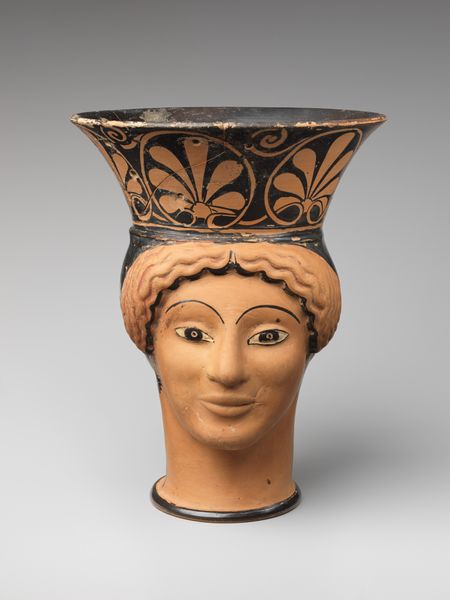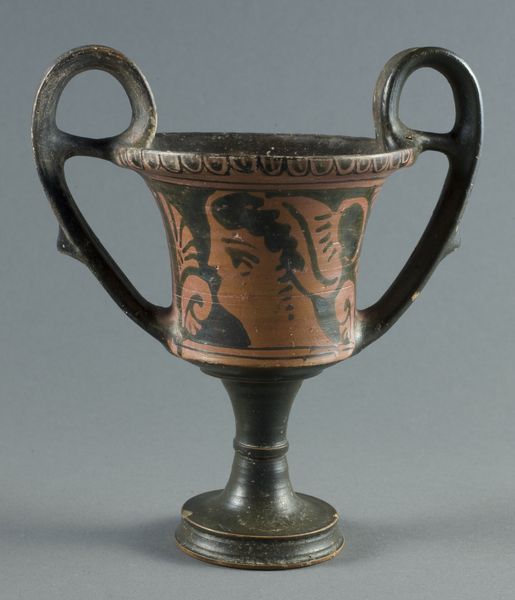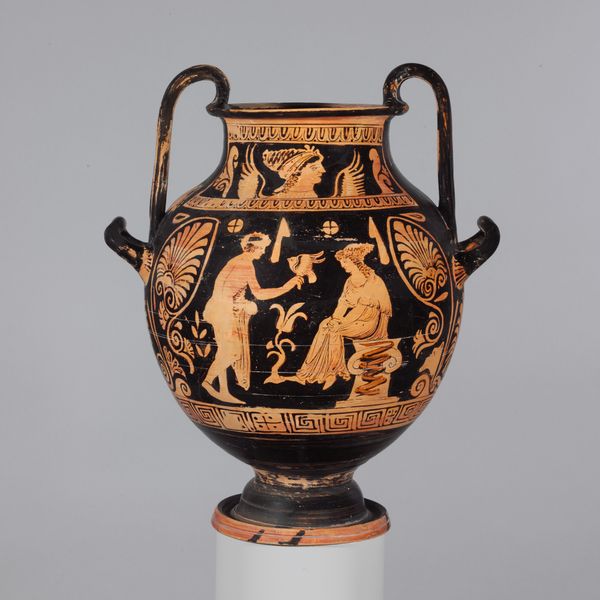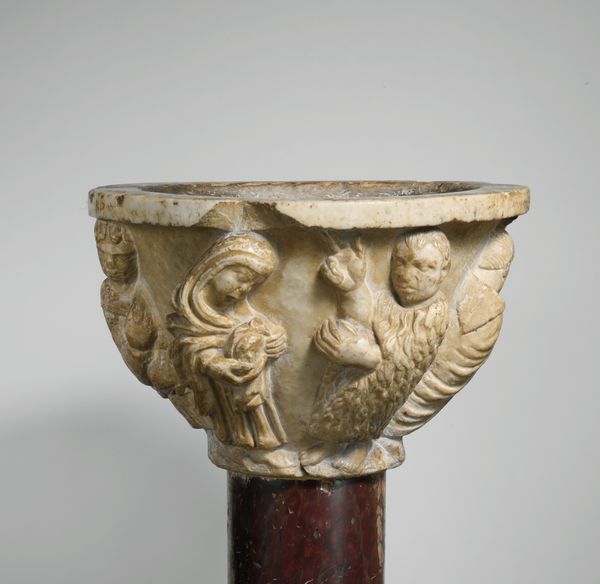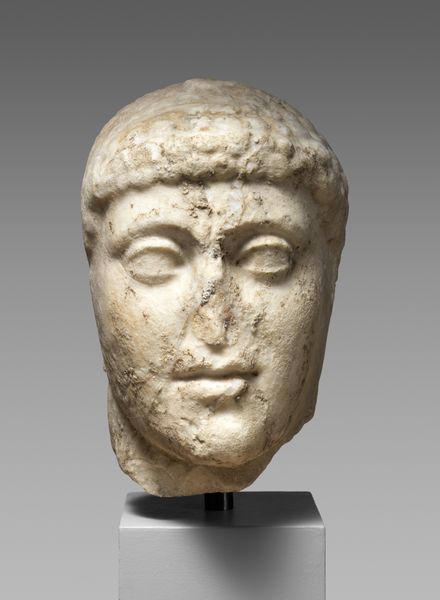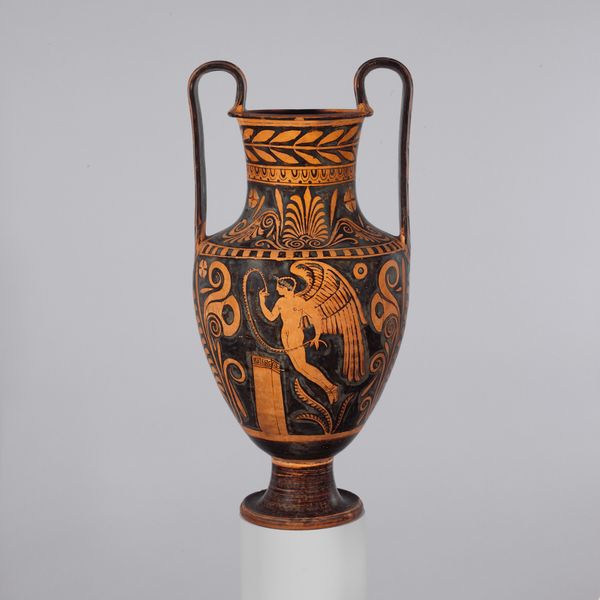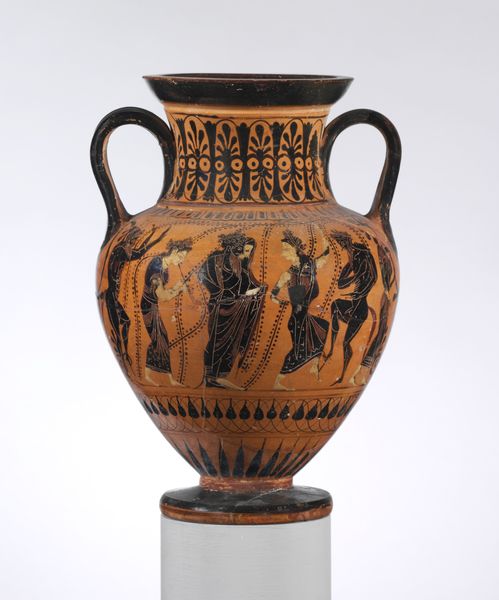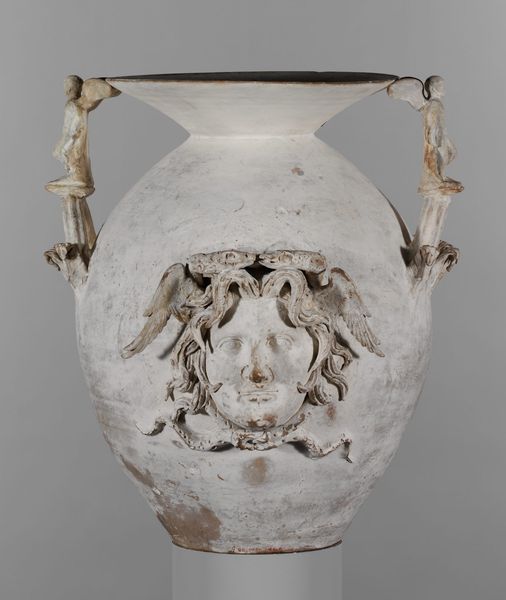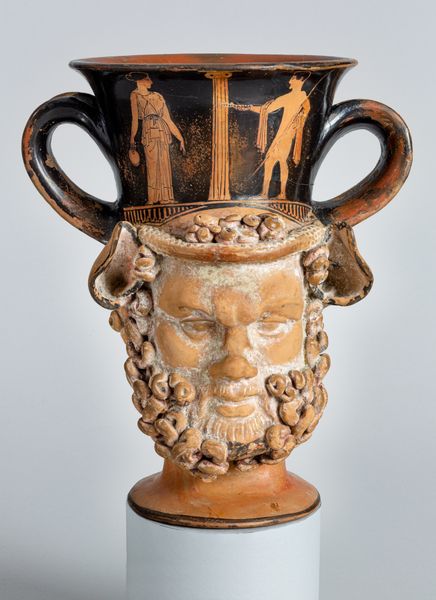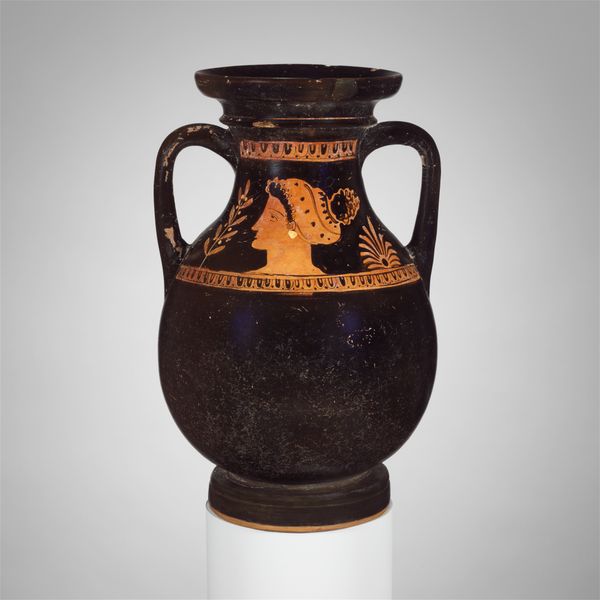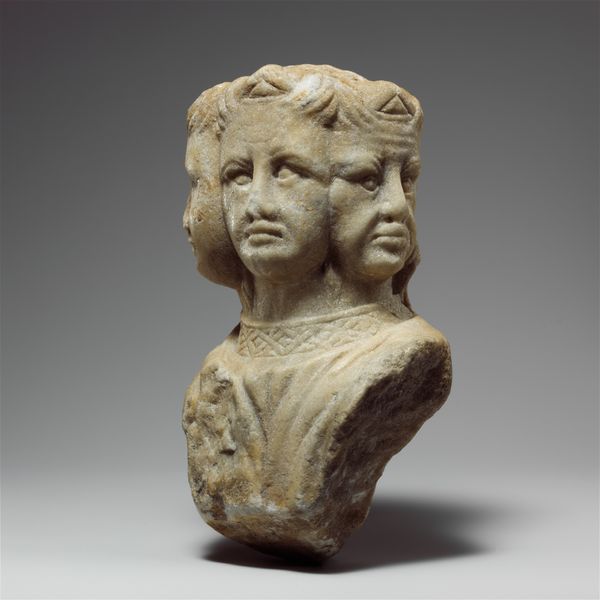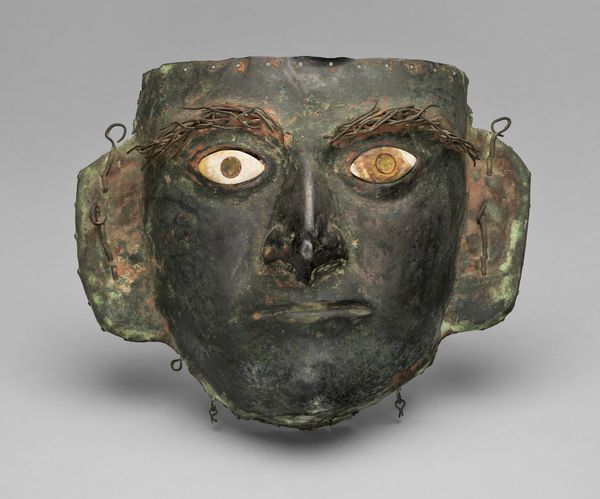
Terracotta kantharos (drinking cup with high handles) 430 BC
0:00
0:00
ceramic, sculpture, terracotta
#
head
#
greek-and-roman-art
#
ceramic
#
vase
#
figuration
#
sculpture
#
terracotta
Dimensions: H. 8 7/16 in. (21.5 cm); diameter of mouth 4 3/4 in. (12.1 cm)
Copyright: Public Domain
Curator: Here we have a terracotta kantharos, a drinking cup with high handles, dating back to 430 BC. It is attributed to the Class W: The Persian Class of Head Vases, and resides here at the Metropolitan Museum of Art. Editor: It’s kind of haunting, isn’t it? The face at the bottom is so serene, almost unnervingly calm. And then you’ve got this burst of frenetic energy above it, this frieze of mythical figures struggling—a juxtaposition of serenity and chaos. Curator: Kantharoi were significant in ancient Greece, notably used in religious rituals and associated with Dionysus, the god of wine. The very making of this cup, the shaping and firing of terracotta, reflects skilled labor and a deep cultural context where the functional became artistic. Editor: You’re so right about the artistic part, this piece transcends the everyday! Like, imagine holding that cup, the weight of the fired clay, feeling the connection to someone so long ago…and is that a Sphinx painted up top? What a conversation starter, honestly. I bet this piece would have the best stories. Curator: It would likely have been used communally, integrating visual stories with rituals of consumption, signifying its inherent communal aspect through craft, access to materials, and their societal integration, not just decorative elaboration. Editor: I like that image of communal storytelling that you paint so clearly! The cup embodies a world—its production, stories, and daily use all converge. Thanks, I have enjoyed looking at this from a new point of view! Curator: And I'm always appreciative when given the opportunity to highlight art with social impact implications—food for thought on ancient Greek dinner tables and our museums.
Comments
No comments
Be the first to comment and join the conversation on the ultimate creative platform.
